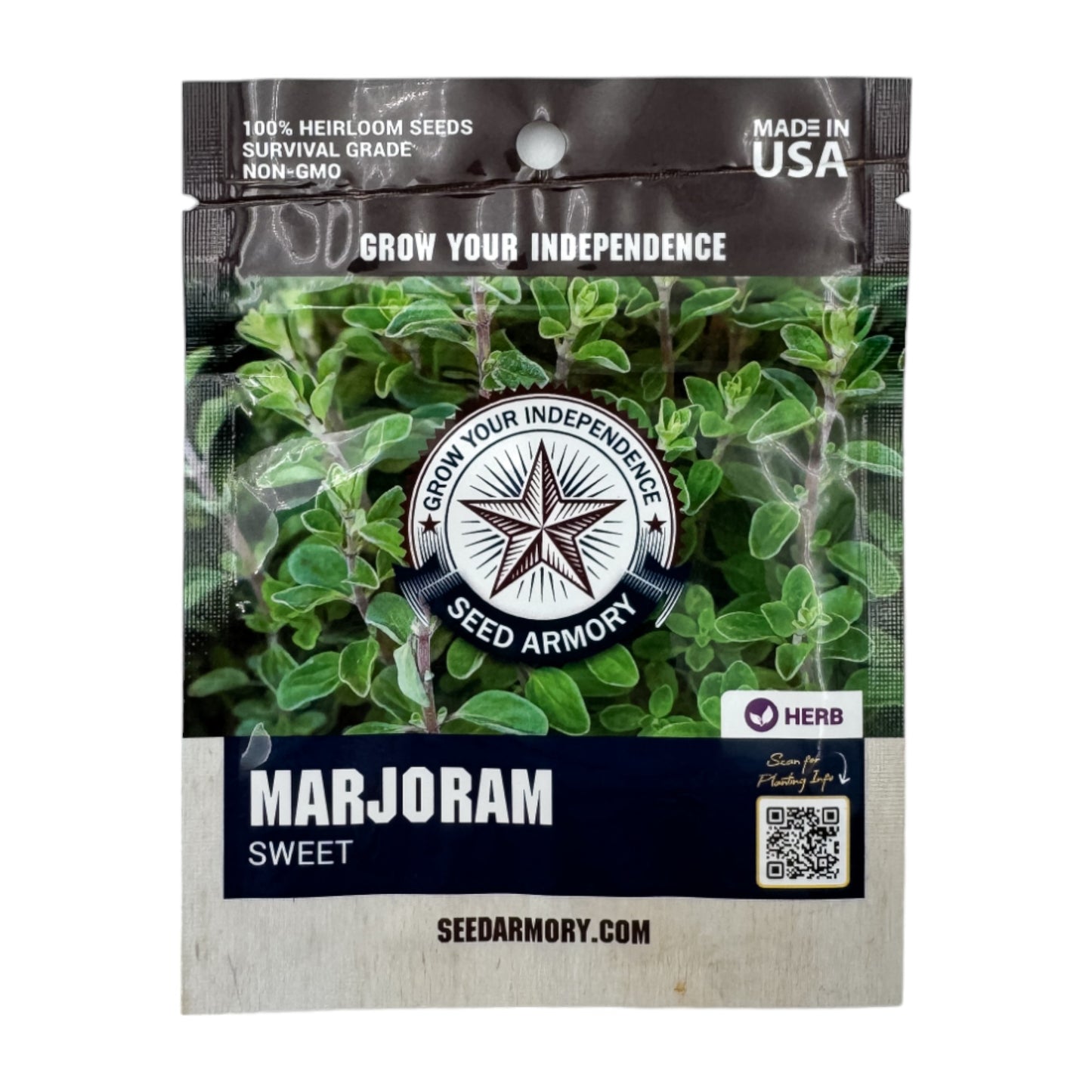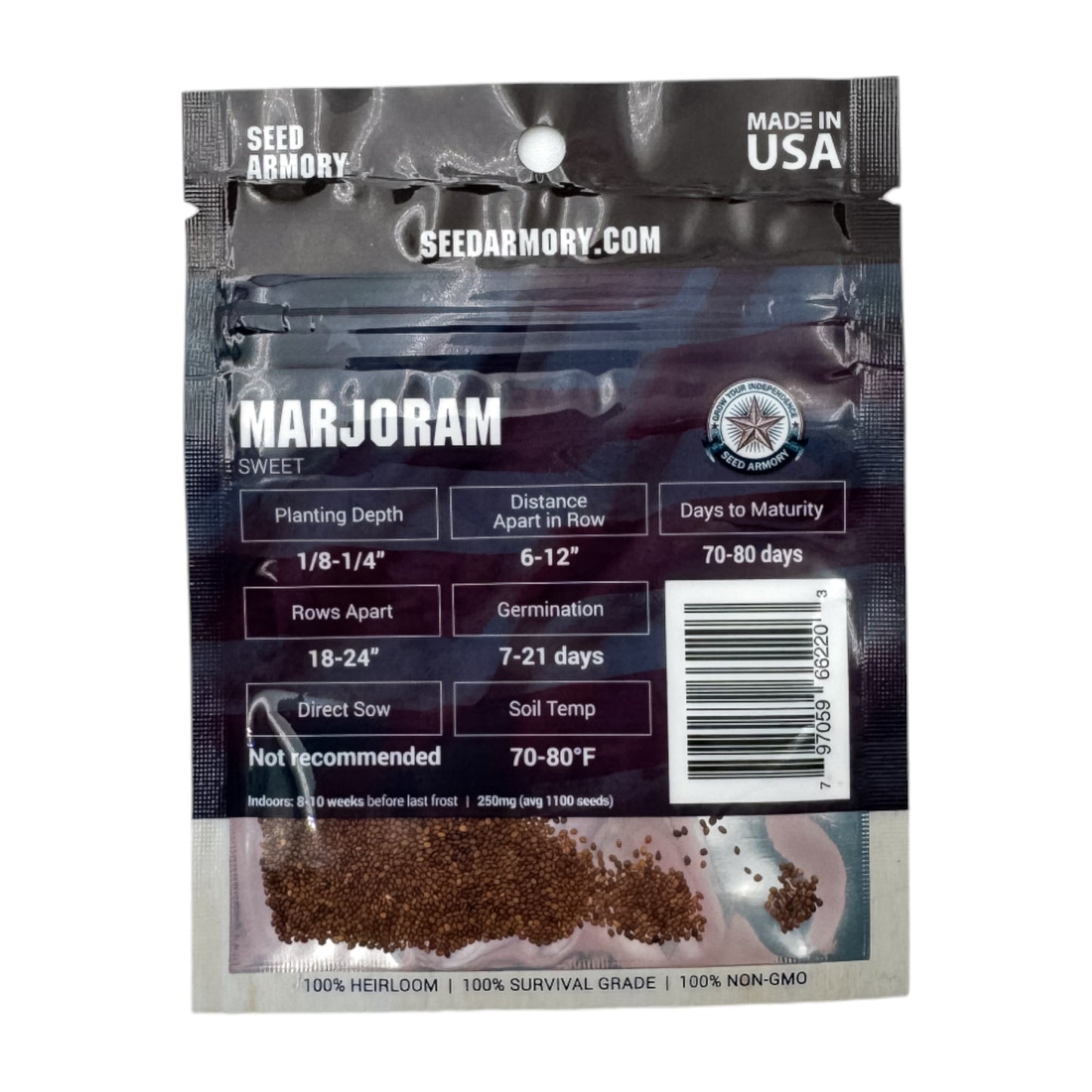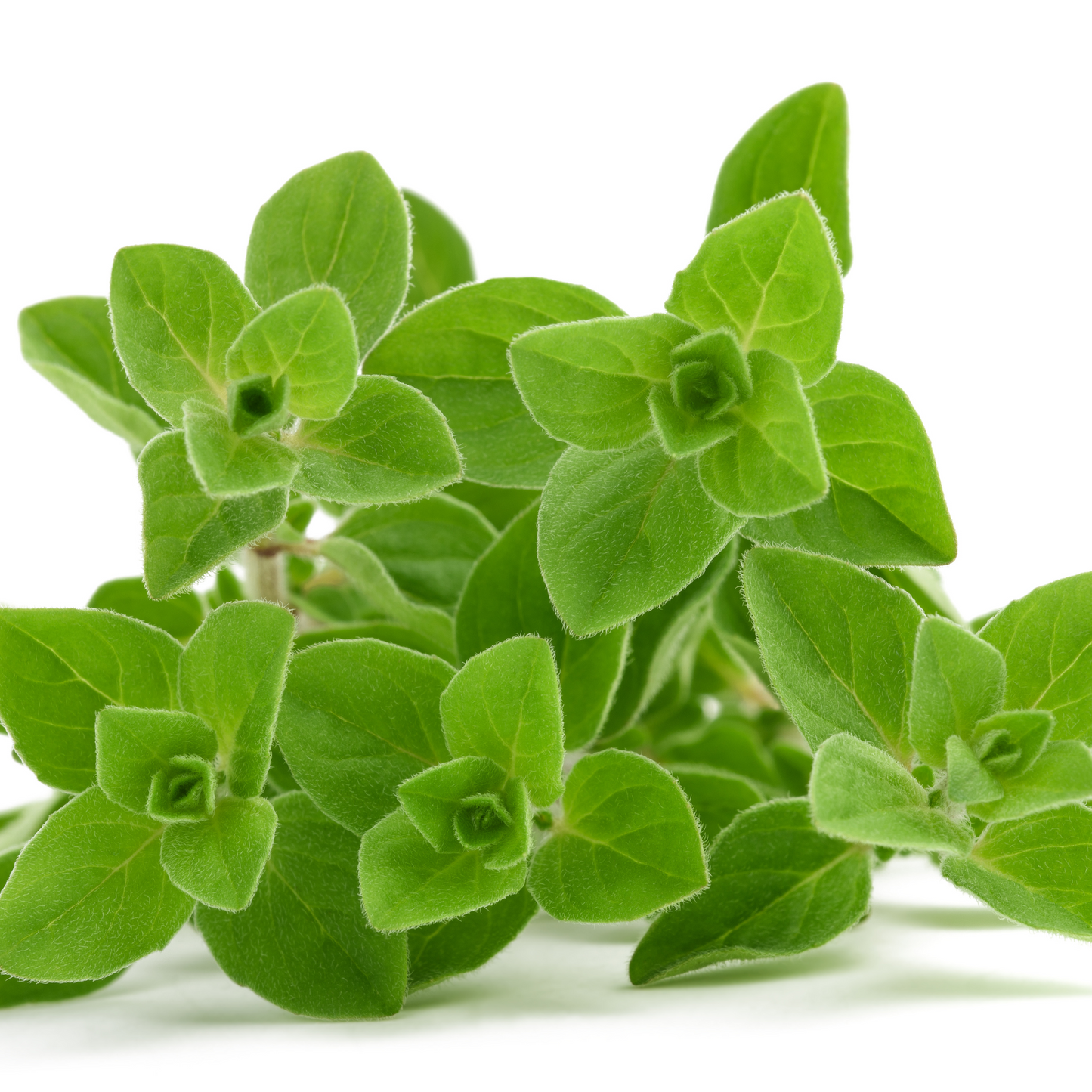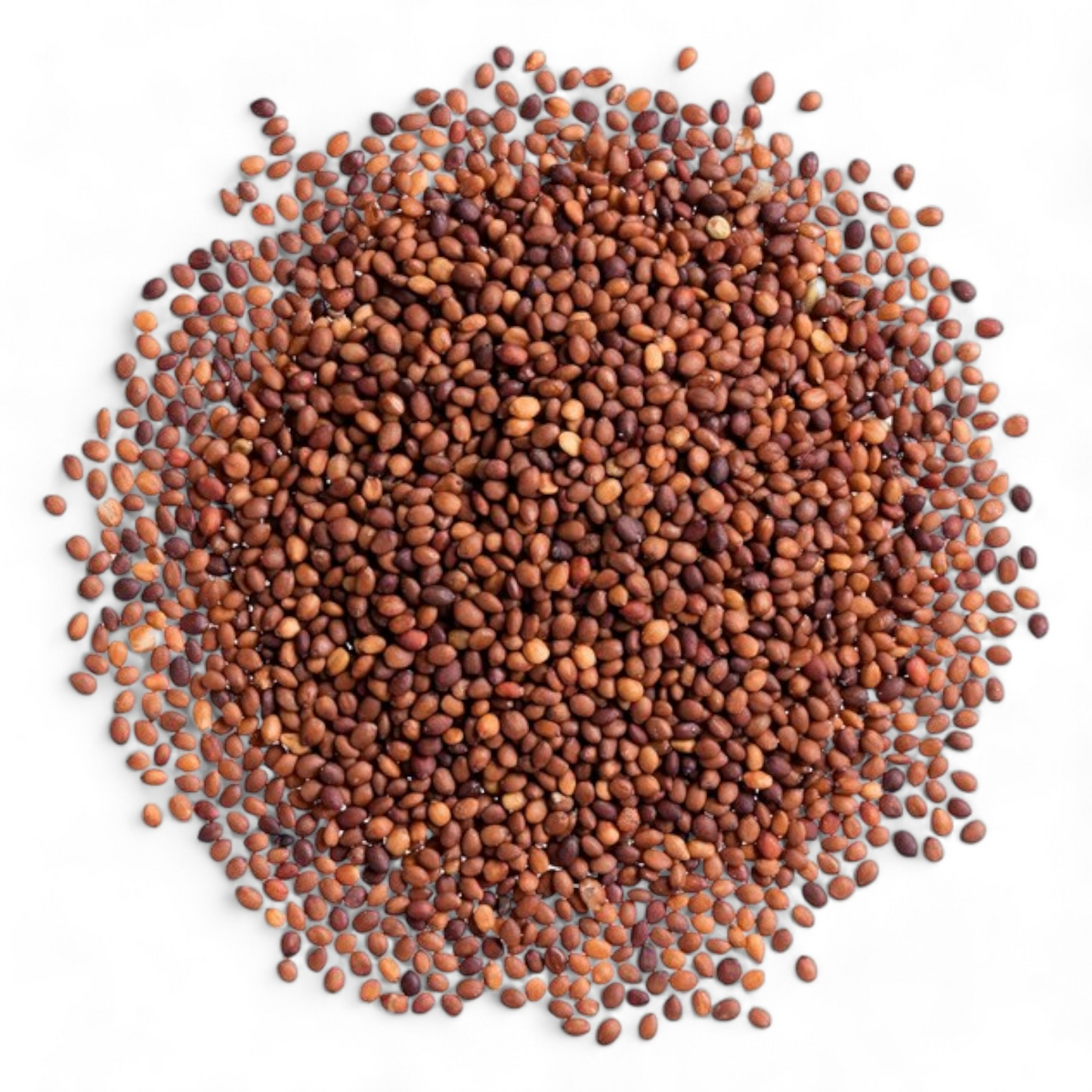- Type: Herb Seeds
Marjoram Heirloom Seeds - Sweet
Packed in Resealable Long Life Mylar
Moisture Proof Packets
10+ Year Survival Seed Viability
- Category: Herb
- Type: Marjoram
- Variety: Sweet
- Family: Mint
- Botanical Name: Lamiaceae
- Hardiness Zones: 5,6,7,8,9,10,11
- Growing Difficulty: 6
- Soil PH: 6.7 – 7.0
- Fertilizer Requirements: None
- Soil Type: Rich, Moist, Well-Draining
- Germination (days): 7 to 21
- Soil Temp for Germination: 70 -80°F
- Lighting Conditions: FULL SUN
- Days to Maturity: 70 – 80
- Planting Depth: 1/8 -1/4”
- Distance Apart (in row): 6-12”
- Row Spacing: 18-24"
Sowing Instructions
NOT RECOMMENDED FOR DIRECT SOWING
Starting Indoors
8-10 WEEKS BEFORE LAST FROST – Soil temperature should be no less than 70°F for best results.
Growing Tips
Marjoram is best started indoors during late winter or early spring. Seedlings can be transplanted outdoors when all threat of frost has passed. Your plants should receive full sun and be well drained. Water regularly but do not over water. Keep plants trimmed by cutting back leaves during growing season.
Culinary Uses
Marjoram has a slightly sweet flavor and pairs well with all types of food. It is usually paired with meat such as beef, pork, and chicken. Dried Marjoram is great for salads dressings and in dried form is relative to Oregano. Use in Tomato dishes and Pizza.
Medicinal Uses
Marjoram is used to make medicine for runny nose, coughs, colds, and infections. You will find that Marjoram has the richest source of Vitamin K lending to its ability to build bone mass. It has also been experimental in the treatment of Alzheimer’s disease by with the apparent effects of limiting brain damage.
Marjoram contains minerals like calcium, potassium, copper, zinc and many more.
The oil from Marjoram is often used as a heart and nerve tonic to promote better blood circulation. Many people believe that it may also treat stomach cramps, migraines, paralysis, and nerve pain.
Note: Consult your doctor before use if pregnant or plan to become pregnant or while breastfeeding.
Harvesting Crops
Harvest when ball tips appear at the end of stems. Cut fresh leaves once plants are 4 to 6 inches. The flavor gets stronger in hot weather. For the best flavor, be sure to harvest before the plant Marjoram goes to flower. Extend the harvest by removing the flower buds when they form. The second flush of growth is a more desired crop than first cut.
Harvesting Seed
Marjoram is a perennial herb and will continue to grow year after year. We recommend allowing some of your marjoram plants to flower and turn brown at the end of their growing season.
Marjoram seeds form inside of the flower heads after the flowers have started to fade and dry out. Allow the flower heads to partially dry on the stalk and clip them a couple inches below the flower. Simply shaking these flower heads into a paper bag will release the seeds. Do not let the flowers fully dry, otherwise the seeds will simply blow away.
Have a question?




Marjoram Heirloom Seeds - Sweet










